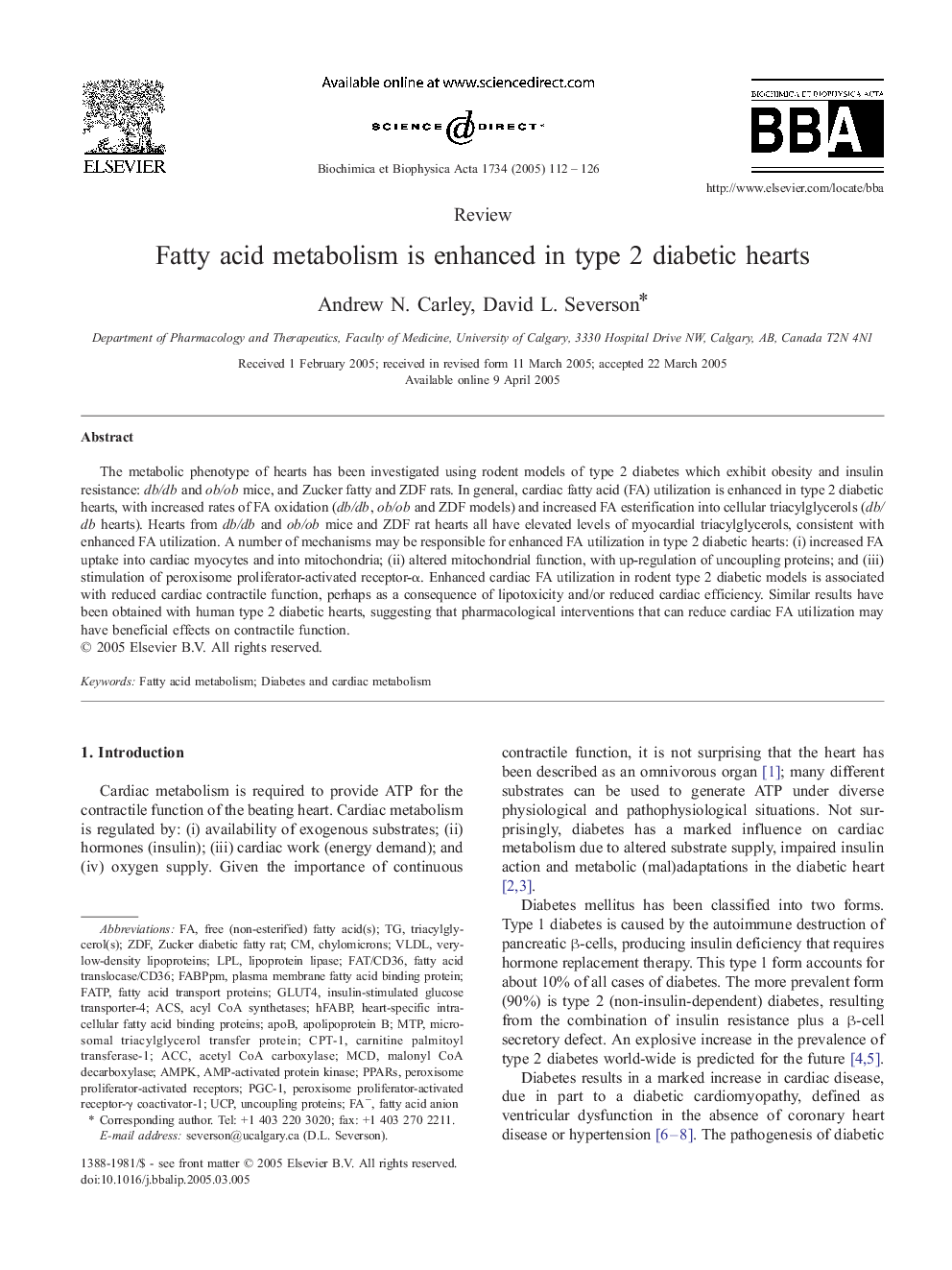| Article ID | Journal | Published Year | Pages | File Type |
|---|---|---|---|---|
| 9886564 | Biochimica et Biophysica Acta (BBA) - Molecular and Cell Biology of Lipids | 2005 | 15 Pages |
Abstract
The metabolic phenotype of hearts has been investigated using rodent models of type 2 diabetes which exhibit obesity and insulin resistance: db/db and ob/ob mice, and Zucker fatty and ZDF rats. In general, cardiac fatty acid (FA) utilization is enhanced in type 2 diabetic hearts, with increased rates of FA oxidation (db/db, ob/ob and ZDF models) and increased FA esterification into cellular triacylglycerols (db/db hearts). Hearts from db/db and ob/ob mice and ZDF rat hearts all have elevated levels of myocardial triacylglycerols, consistent with enhanced FA utilization. A number of mechanisms may be responsible for enhanced FA utilization in type 2 diabetic hearts: (i) increased FA uptake into cardiac myocytes and into mitochondria; (ii) altered mitochondrial function, with up-regulation of uncoupling proteins; and (iii) stimulation of peroxisome proliferator-activated receptor-α. Enhanced cardiac FA utilization in rodent type 2 diabetic models is associated with reduced cardiac contractile function, perhaps as a consequence of lipotoxicity and/or reduced cardiac efficiency. Similar results have been obtained with human type 2 diabetic hearts, suggesting that pharmacological interventions that can reduce cardiac FA utilization may have beneficial effects on contractile function.
Keywords
ACCplasma membrane fatty acid binding proteinHFABPfatty acid translocase/CD36FABPpmUCPFATPPGC-1CPT-1VLDLLPLMCDAMPKACSZDFapoBMTPGLUT4AMP-activated protein kinaseFAT/CD36PPARsApolipoprotein Bacetyl coA carboxylasetriacylglycerol(s)Uncoupling proteinsLipoprotein lipasevery-low-density lipoproteinsFatty acid metabolismZucker diabetic fatty ratMicrosomal triacylglycerol transfer proteinfatty acid transport proteinschylomicronscarnitine palmitoyl transferase-1Peroxisome proliferator-activated receptors
Related Topics
Life Sciences
Biochemistry, Genetics and Molecular Biology
Biochemistry
Authors
Andrew N. Carley, David L. Severson,
